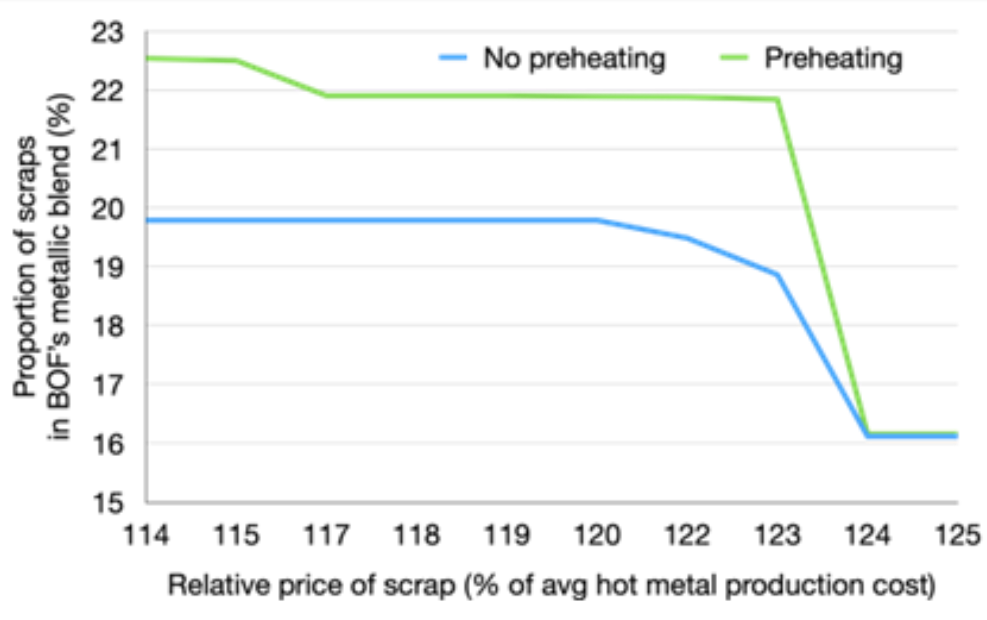The impact of scrap preheating in CO2 emissions

The increasing pressure by market, government, and press over CO2 emission rates have forced steelmakers to innovate their production process. The industry has seen in the last few years many viable alternatives, both in reduction processes and at the steel shop, to achieve lower emission levels. In this post we'll estimate the operational, environmental, and economic impact of the scrap preheating initiative at the blast oxygen furnace (BOF) using Cassotis' integrated steel plant model.
.png)
Ina previous post it was shown that, in integrated steel plants, the production of each ton of steel generates between 1.7 and 1.9 tons of CO2. Although each process contributes to this emission, the blast furnace by far holds the most responsibility for that rate. For instance, our mathematical model estimates that around 80% of the CO2 is generated during the production of hot metal. Therefore it is logical that if a plant is able to maintain its slab production level while reducing the proportion of hot metal in the BOF metallic charge, it could reduce the overall emission of CO2. In order to reduce the hot metal it is necessary to increase the proportion of scraps in the charge.
From a chemical perspective, steel scraps have advantages over hot metal, since they have lower contents of sulfur and phosphorus, besides having a higher iron content. However, this substitution has a major impact on the thermal balance of the BOF, since it is replacing a material that supplies energy with another that demands energy. Therefore, scrap preheating has emerged as a technical alternative to compensate for the reduction of hot metal in the thermal balance of the BOF.
Using our model representing a typical integrated steel plant we estimated the impact of introducing the scrap preheating system. The results show that it would be possible to increase the scraps proportion in the metallic blend by 13.95% assuming the heating of the scraps to 800ºC. This corresponds to a 3.29% reduction in hot metal production. With that, the overall CO2 emission level would be reduced by 2.2%. A substantial reduction can be achieved even after calculating all impacts in chemical and energetic balances of the plant.
Additionally, the model allows us to know if this environmentally-friendly technology would also be economically attractive for the plant. The answer relies on the market price of the available external scrap. In the figure below, we can see that the proportion of scraps in the metallic blend decreases along with the price of the scrap metal, eventually reaching similar conditions before the introduction of the technology.

When engineering research develops technologies with not only environmental benefits but also economic gains, the industry has great incentive to change its practices. That is why it is crucial to keep innovating and testing in a controlled environment. Therefore, consider using a mathematical model capable of representing all new alternatives for your process and estimate their possible outcomes.